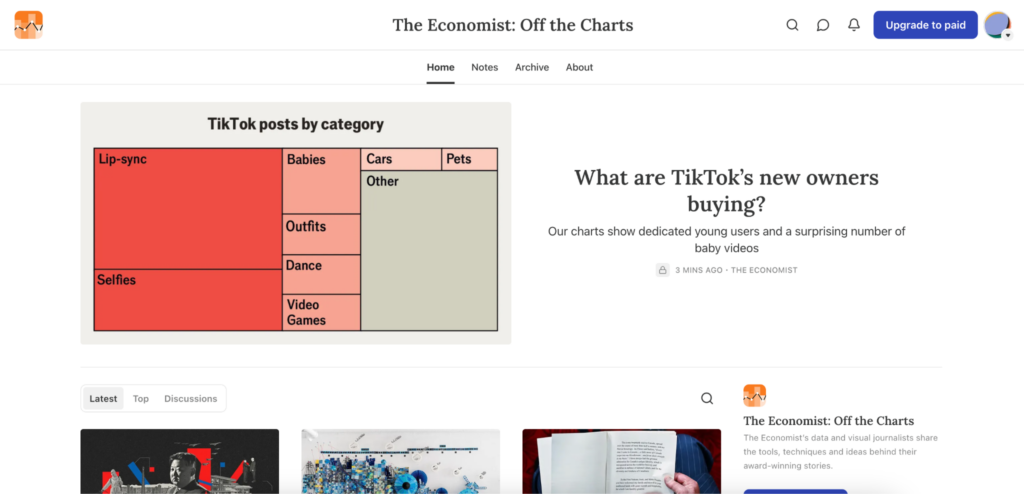

In a strategic move to engage a new and distinct audience, as well as take note from the creator economy, The Economist has launched its data journalism newsletter, “Off the Charts,” on Substack. This decision to venture beyond its traditional paywalled ecosystem offers a fascinating glimpse into how a legacy publisher is adapting to the evolving digital landscape. I sat down with Aaron Coultate, Head of Newsletters at The Economist, to discuss the thinking behind this exciting initiative.
Context: an innovative idea for an established product
The idea to launch “Off the Charts” on Substack was born from a great collaboration between the editorial and commercial teams. The core idea? To find a new way to reach potential readers who are interested in a specific area of The Economist’s content but might not be ready to commit to a full subscription just yet.

“Off the Charts” was the perfect candidate for this experiment. It originally launched as a free newsletter back in 2021 before being moved behind the paywall as part of the core subscription. But the vibrant data journalism community that had grown around it was too compelling to ignore. This new Substack launch, which was in the works for several months, is a deliberate effort to both create a new revenue stream and nurture that niche audience.












